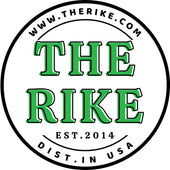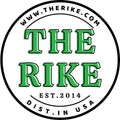Unlock Nature's Secrets: Healing Herbs for Wellness
In a world increasingly driven by synthetic medicines, the natural healing properties of herbs are often overlooked. Healing herbs have been used for centuries to promote wellness, alleviate ailments, and enhance overall health. This comprehensive guide will explore the myriad benefits of healing herbs, giving you the knowledge to harness their potential in your daily life.
Table of Contents
- Introduction
- What Are Healing Herbs?
- The Benefits of Healing Herbs
- Popular Healing Herbs
- How to Use Healing Herbs
- Safety Considerations
- Frequently Asked Questions
What Are Healing Herbs?
Healing herbs are plants that possess medicinal properties, which have been utilized for centuries across various cultures. These herbs provide a natural alternative to pharmaceuticals, offering an array of benefits without the harsh side effects often associated with synthetic drugs. From ancient Ayurvedic practices to traditional Chinese medicine, healing herbs play a crucial role in promoting health and wellness.
The Benefits of Healing Herbs
Incorporating healing herbs into your wellness routine can offer numerous benefits:
- Natural Remedies: Healing herbs are derived from nature, often providing a gentler approach to health compared to pharmaceuticals.
- Rich in Nutrients: Many herbs are packed with vitamins, minerals, and antioxidants essential for maintaining good health.
- Holistic Healing: Herbs not only target specific ailments but also enhance overall well-being by supporting the body’s natural healing processes.
- Versatile Applications: Healing herbs can be used in teas, tinctures, oils, capsules, and even in cooking, making them easy to incorporate into everyday life.
- Minimal Side Effects: When used correctly, healing herbs typically produce fewer side effects than prescription medications.
Popular Healing Herbs
Here are some widely recognized healing herbs that you can easily incorporate into your wellness routine:
1. Ginger
Ginger (Zingiber officinale) is celebrated for its anti-inflammatory and antioxidant properties. It is commonly used to treat digestive issues, reduce nausea, and alleviate pain.
- Usage: Ginger can be consumed fresh, in tea, or as a powder in various dishes.
- Benefits: It may help reduce muscle pain, improve digestion, and alleviate nausea.
2. Turmeric
Turmeric (Curcuma longa) contains curcumin, a powerful anti-inflammatory compound. It’s known to support joint health and boost the immune system.
- Usage: Often used in cooking, turmeric can also be made into tea or taken in supplement form.
- Benefits: Supports joint health, promotes heart health, and enhances brain function.
3. Lemon Balm
Lemon balm (Melissa officinalis) is a calming herb that is often used to reduce stress and anxiety. It also has antiviral properties.
- Usage: Commonly taken as tea or in capsule form.
- Benefits: Reduces stress, promotes restful sleep, and improves mood.
4. Echinacea
Echinacea is well-known for its role in boosting the immune system and reducing the duration of colds and infections.
- Usage: Available as tea, tinctures, or supplements.
- Benefits: May help prevent colds and flu, speeding up recovery time.
5. Peppermint
Peppermint (Mentha × piperita) has soothing properties that can relieve headaches, digestive issues, and respiratory problems.
- Usage: Consumed as tea, used in aromatherapy, or applied topically as an essential oil.
- Benefits: Eases headaches, relieves digestive problems, and helps clear sinuses.
How to Use Healing Herbs
To maximize the benefits of healing herbs, here are several methods to consider:
- Teas: Brew herbal teas by steeping dried herbs in hot water for 5-10 minutes.
- Tinctures: Alcohol or glycerin-based extracts concentrated with the herb’s benefits; a few drops can be taken directly.
- Capsules: Convenient for those who prefer a measured dose of herb supplements.
- Topical Applications: Oils and salves can be applied directly to the skin for localized effects.
- Cooking: Add dried or fresh herbs to meals to boost flavor and health benefits.
Safety Considerations
While healing herbs are natural, it’s essential to approach their use with caution:
- Consult with a healthcare professional, especially if you are pregnant, nursing, or taking medications.
- Be aware of potential allergies and sensitivities to certain herbs.
- Start with small doses to assess your body’s reaction before gradually increasing.
- Research the herbs you choose to ensure proper use and dosages.
Frequently Asked Questions
What are the most commonly used healing herbs?
Some of the most commonly used healing herbs include ginger, turmeric, Echinacea, peppermint, and lemon balm, each with unique health benefits and uses.
Are healing herbs safe for everyone?
While many healing herbs are safe for most individuals, people with specific health conditions or those taking certain medications should consult a healthcare provider before using them.
How can I incorporate healing herbs into my diet?
You can incorporate healing herbs into your diet through teas, cooking, supplements, or topical applications, depending on your preferences and the specific herb.
Call to Action
Unlock the power of nature with healing herbs and discover their transformative effects on your well-being. To learn more about natural wellness solutions, visit therike.com today!





Leave a comment